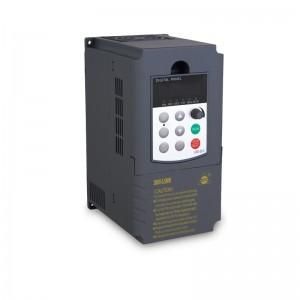1. Conceptual understanding of inverter
The process of converting AC power into DC power is called rectification, the circuit that completes the rectification function is called a rectifier circuit, and the device that realizes the rectification process is called a rectifier device or a rectifier. Correspondingly, the process of converting DC power into AC power is Economic Vector AC Drive LSD-C7000, the circuit that completes the inverter function is called inverter circuit, and the device that realizes the inverter process is called inverter equipment or inverter.
2. Detailed explanation of inverter classification
1. According to the frequency of AC power output by the inverter, it can be divided into power frequency inverter, intermediate frequency inverter and high frequency inverter. The frequency of the power frequency inverter is an inverter of 50 to 60 Hz; the frequency of the intermediate frequency inverter is generally 400 Hz to more than ten kHz; the frequency of the high frequency inverter is generally more than ten kHz to MHz.
2. According to the number of phases output by the inverter, it can be divided into single-phase inverter, three-phase inverter and multi-phase inverter.
3. According to the direction of the output power of the inverter, it can be divided into active inverter and passive inverter. Any inverter that transmits the electrical energy output by the inverter to the industrial power grid is called an active inverter; any inverter that transmits the electrical energy output by the inverter to a certain electrical load is called a passive inverter. device.
4. According to the form of the main circuit of the inverter, it can be divided into single-ended inverter, push-pull inverter, half-bridge inverter and full-bridge inverter.
5. According to the type of the main switching device of the inverter, it can be divided into thyristor inverter, transistor inverter, field effect inverter and insulated gate bipolar transistor (IGBT) inverter. It can also be classified into two categories: “half-controlled” inverters and “full-controlled” inverters. The former has no self-shut-off ability, and the components lose their control after they are turned on, so they are called “half-controlled” ordinary thyristors. The turn-on and turn-off of the transistor can be controlled by the control electrode, so it is called “full control type”. Power field effect transistors and insulated gate dual-weight transistors (IGBTs) belong to this category.
6. According to the DC power supply, it can be divided into voltage source inverter (VSI) and current source inverter (CSI). In the former, the DC voltage is nearly constant, and the output voltage is an alternating square wave; in the latter, the DC current is nearly constant, and the output current is an alternating square wave.
7. According to the waveform of inverter output voltage or current, it can be divided into sine wave output inverter and non-sine wave output inverter.
8. According to the inverter control mode, it can be divided into frequency modulation (PFM) inverter and pulse width modulation (PWM) inverter.
9. According to the working mode of the inverter switching circuit, it can be divided into resonant inverter, fixed frequency hard switching inverter and fixed frequency soft switching inverter.
10. According to the inverter commutation mode, it can be divided into load commutated inverter and self-commutated inverter.
Post time: Feb-28-2023

